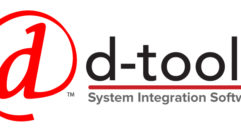
Intellectual Property Issues Affect Nearly All Integrators
May 25, 2006 8:00 AM
Members at at recent InfoComm roundtable disscussion in Chicago discussed the topic of intellectual property.
To get a clear idea of what makes a business successful, it’s often necessary to look beyond a warehouse full of products or a series of completed installs. The real secrets of an AV integrator’s competitiveness may be springing continuously from the imaginations of its key people in the form of inventions, designs, and ideas.
Integrators need to be more aware of the value of this intellectual property (IP) and what they can—or indeed, what they must— do in order to protect it. That was the premise underlying two recent initiatives by InfoComm, a new white paper on IP, and a pair of regional roundtables in Chicago and New York on IP issues in the AV industry.
Presenters stressed that integrators with IP concerns should obtain their own legal advice tailored to their specific circumstances. Still, they offered some general advice to stimulate awareness and thinking.
Attorneys William Rambo and Stephen D. Strauss, authors of the Guidelines for protection of intellectual property white paper, noted that InfoComm itself plays a key role in protecting IP by educating members, working internationally to promote respect for IP, and cooperating with courts and government agencies to enforce IP rights.
Much of the responsibility for protecting IP, though, falls on its owners, and indeed failure to take adequate action to protect IP may even weaken the owner’s case for legal protection. One part of the definition of a “trade secret,” for example, is that its owner must make reasonable efforts to maintain its secrecy or confidentiality.
Trade secrets are just one form of IP. Integrators who frequently offer proposals to corporate clients, publicize their products and services, or develop new devices and software need to consider what IP may be involved in these activities.
Dean A. Pelletier, shareholder in McAndrews, Held & Malloy, spoke at the Chicago InfoComm roundtable and said the first two steps for anyone concerned about IP protection are to identify the company’s IP, then take action to establish or fortify the company’s ownership of the IP. Such actions can include filing for patents, copyrights, and other protections.
It’s important to understand the differences among the various forms of legal protection.
Patents can apply to both products and designs. A utility patent protects products and processes, while a design patent protects “non-functional aspects of an ornamental design.”
Pelletier used one very common AV industry tool as an example. A user interface for an AV system could be eligible for both utility and design patents.
Copyright protection can protect original, independently created expressions of ideas, though not the ideas themselves. In the AV industry, prime examples of copyright-eligible material include software, technical drawings, architectural plans, and such audio-visual works as software-generated displays. The look and feel of a graphical user interface may be subject to copyright protection.
Trademarks and trade dress are additional areas in which legal protection is available for a company’s creations. Trademarks, of course, can be formally registered for the best assurance of legal protection, even though rights in a trademark can also be acquired through long-term use. Trade dress refers to the unique appearance of a product’s packaging, containers, or some other aspect of its overall appearance.
The attorneys stress that the best strategy for protecting IP in a vendor/client relationship is to include specific language about IP in the contract between the parties.
A trade secret is information that creates economic value for its creator as a result of not being generally known to others who could benefit from it. Common examples include customer lists, pricing data, formulas, processes, and business plans.
A large number of people within an organization may be privy to these secrets, and of course, in this day and age people change jobs frequently. The organization must make reasonable efforts to keep its secrets…a secret. Such efforts often include non-disclosure agreements and similar contracts.









